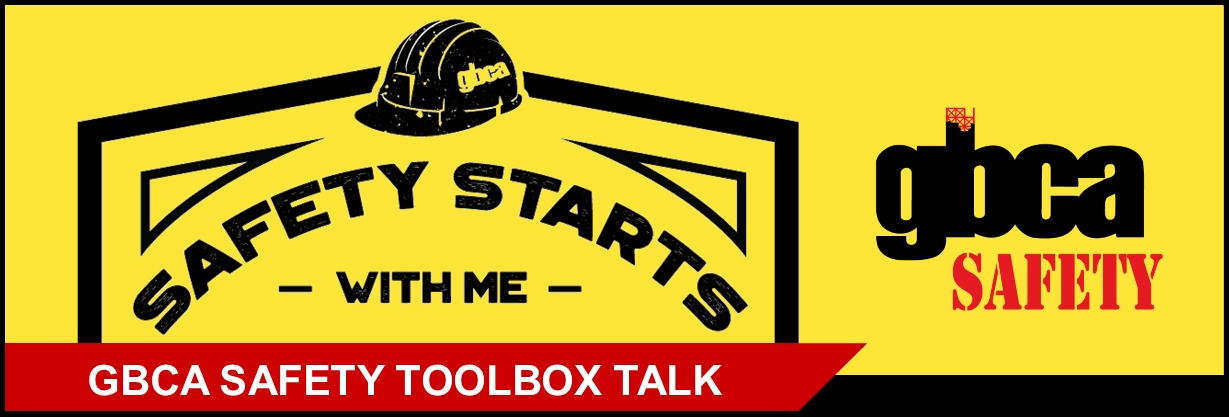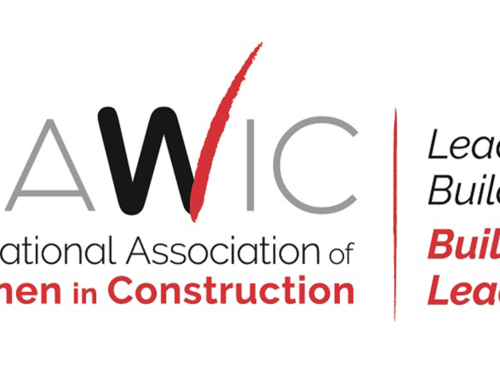This GBCA Safety Toolbox Talk discusses safety issues when lifting and moving suspended loads. Click below to download the Toolbox Talk as a handout (includes Sign-In Sheet).
Lifting and Moving Suspended Loads
Lifting, suspending, and moving loads are common construction activities that can lead to struck-by incidents. Suspended loads often move over large areas and can be dropped onto workers or shift and fall.
SECURE ALL LOADS
- Check that the load rating for rigging (slings, chains or straps) is adequate for the lift. All rigging MUST have a tag identifying its safe working load.
- Inspect all rigging. Remove rigging that is worn or past its date of effectiveness.
- Rig and secure materials so that the load is balanced and cannot shift during lift.
- You may have to band, stack, and secure materials to a pallet, or put materials in a container before making the lift.
BEFORE LIFTING & MOVING A SUSPENDED LOAD
- Always check first for overhead power lines and other obstructions.
- Make sure all cranes or hoists making the lifts are rated for the loads they are lifting.
- Walk the route before lifting the load. Mark all possible pinching and crushing hazards around the machine and the load landing area.
- Clear the area below the lift by either using barricades or a ground person.
- Put barricades around the swing radius of the crane so no one can get hit or park a vehicle within this area.
- Follow a written engineered lift plan for all critical lifts. Deviations on critical lifts require new plans.
WHEN LIFTING & MOVING A SUSPENDED LOAD
- Never work, or allow anyone to work, under a suspended load. Crane or hoist operators must always watch a load when it is in motion.
- Notify all employees that a lift is going on. Use a horn or ground person to do this.
- A trained signalman is required and must use the standardized hand signals. The equipment operator and signal man must have clear, unobstructed views of each other.
- Only one person should control a lift or give signals to the equipment operator, except to warn of a hazardous situation.
- Always capture the center of the load so it is level when lifting.
- Use tag lines to control the load during the lift, and make sure the employee using the lines stays out from under the load as well.
- When using a tag line never wrap the line around your hand. Be aware as to not let the line wrap around your feet.
- When receiving the load, never remove straps or bands until the material is completely and safely set down.
- If receiving the lift at a height, make sure fall protection is used.
- Never raise a load higher than necessary, or leave a load suspended in the air.
Remember to record the attendees of your toolbox talk!
Access GBCA’s full library of toolbox talks:





